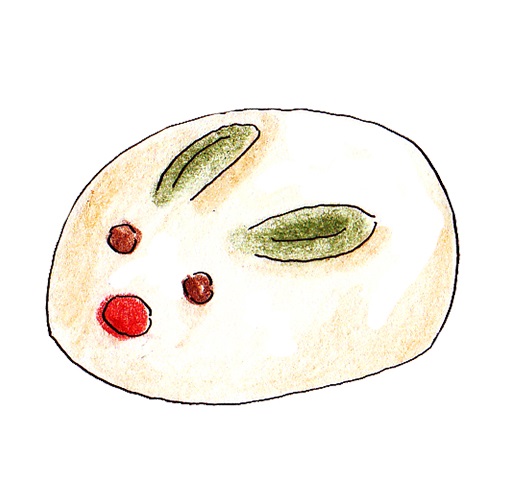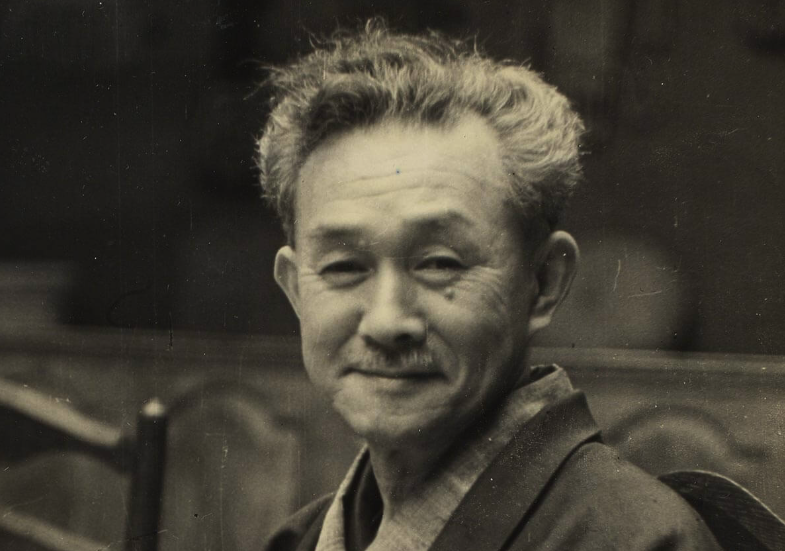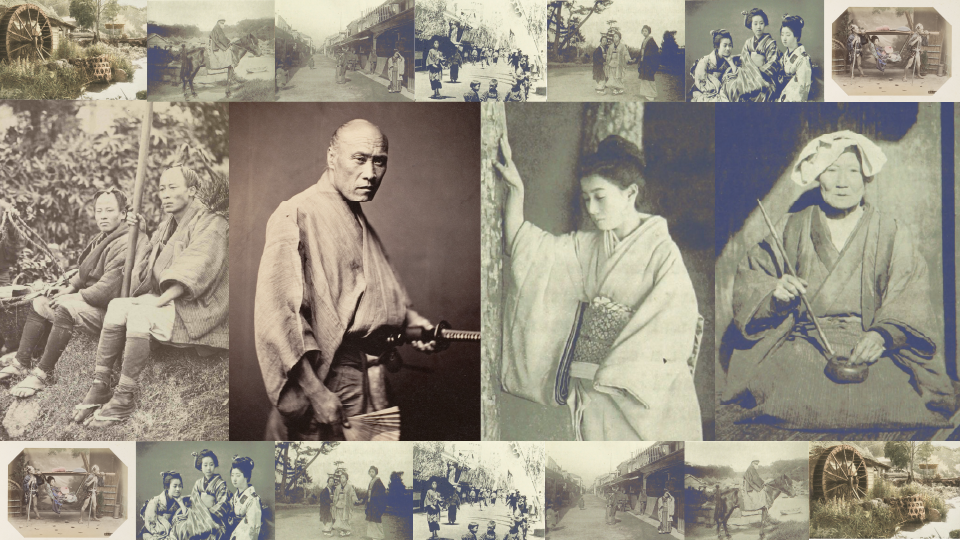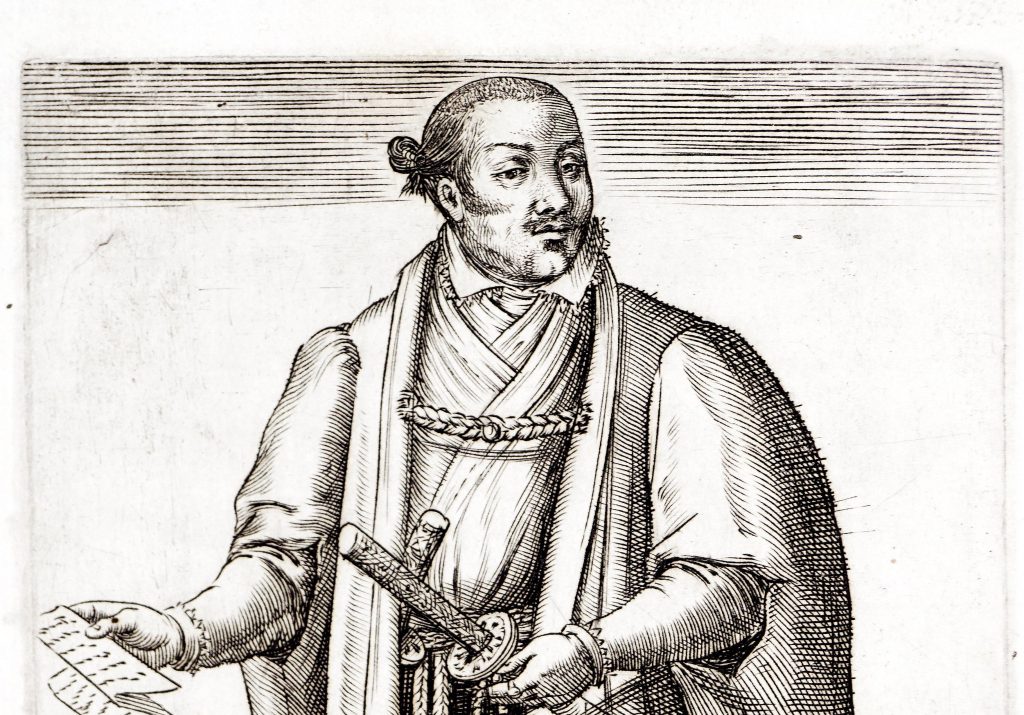The new 5,000 yen note began circulating in 2024. The woman chosen for the portrait is Tsuda Umeko (津田梅子). She was the first Japanese woman to study abroad during the Meiji era, and after returning to Japan she opened Joshi Eigaku Juku (女子英学塾/the Women’s english language school), the forerunner of Tsuda College, and devoted herself to the education of women. She also met Helen Keller and Florence Nightingale, two of the world’s great women of her time. Let’s trace the life of Tsuda Umeko, a pioneer of modern women.
Travelling to America with the Iwakura mission at the age of six
Tsuda Umeko was born in Edo in December 1864, in the intense years of the Tokugawa Shogunate. Her name at birth was Ume, which she later changed to Umeko.
She crossed the sea to study in the USA with the Iwakura (岩倉) Mission in 1871 at the behest of her father, Tsuda Sen (津田仙) Her father was said to have cut off his chonmage when he travelled to Europe and the US as an interpreter to the shogunate, saying that it was because ‘men there didn’t tie their hair’. She was eight years old by her count, and according to the current method of counting age, she was only six when the ship left Yokohama, and celebrated her seventh birthday on board.
The Iwakura Mission, with Iwakura Tomomi (岩倉具視) as ambassador plenipotentiary and Okubo Toshimichi (大久保利通), Ito Hirobumi (伊藤博文) and others as deputy ambassadors, was intended to inspect European and American institutions.
More than 40 foreign students were on board the same ship, of whom five were female students. Umeko was the youngest.
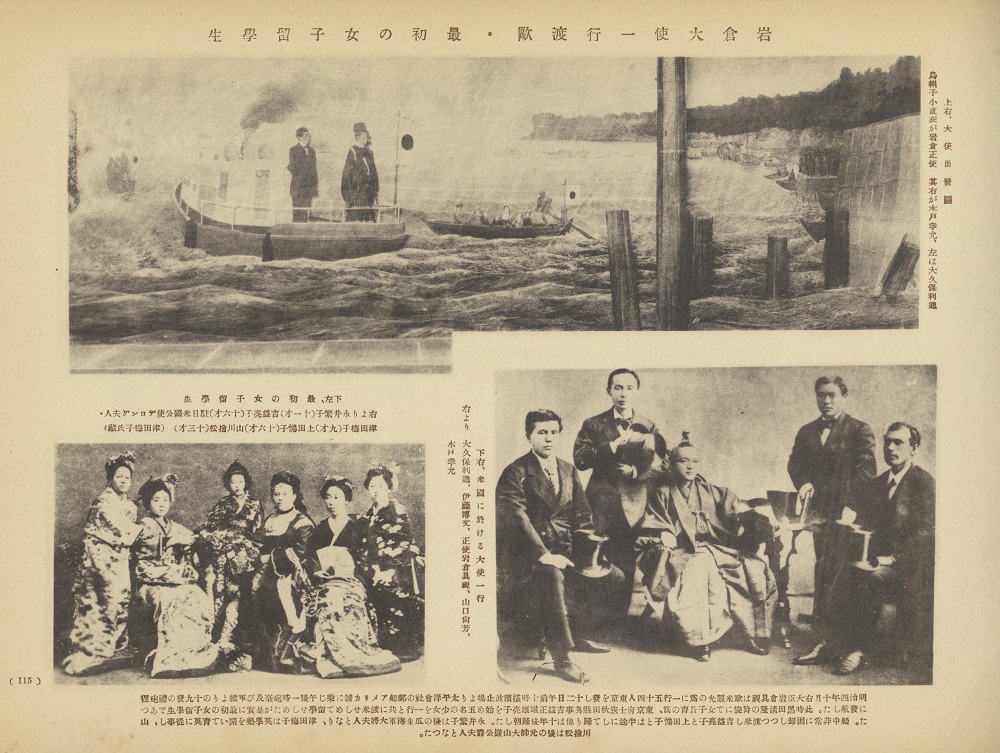
Returned home at 17 with dreams of becoming a teacher
When Umeko arrived in the USA, it was Mori Arinori (森有礼), a diplomat in Washington at the time, who, while surprised by how young Umeko was, helped her settle into her studies. Umeko went to school whilst living with the Lanmans, a wealthy American couple, who loved her like their own child. At the age of eight, Umeko was baptised as a Christian at her own request.
Of the five female exchange students, the two oldest returned home first, but the remaining three – Umeko, Yamakawa Sutematsu (山川捨松) and Nagai Shigeko (永井繁子) – spent the originally planned 10 years in the USA. Calling themselves a trio, they nurtured a bond that lasted until after they returned home.
Umeko returned to Japan in 1882, a year longer than her planned 10 years to coincide with her graduation from girls’ school. It was just before her 18th birthday when she travelled back to Japan on the same ship as Sutematsu, who graduated from university the same year. On the ship, Umeko and Sutematsu discussed their dream of inviting Alice Bacon, who had who’d grown up with Sutematsu at their boarding house and had become like a sister to her, to Japan and the three of them would open a school for girls when they returned. She wanted to become a leader of Japanese women and repay the government for the money it had paid for her to study in Japan.
Doubts about marrying too soon and taking the first step towards her dream
Having moved to the USA as a child and spent more years there than growing up in Japan, Umeko’s Japanese language skills were not very good when she first returned to Japan. Nevertheless, the Japanese people were still very interested in the knowledge, etiquette, even hairstyles and fashions that Umeko brought back from the USA.
Having become a popular socialite, Umeko was surprised to find that Japanese women were marrying at a young age in their mid-teens, to partners chosen by their parents. Whereas men returning from study abroad were expected and treated well by the Meiji Government, marriage seemed to be the only path for Umeko and other female students. It was not yet common in Japan at that time for girls from so-called good families to work in a profession of their own volition.
Umeko felt that from now on, the world should be a place where people choose their own partners and marry on their own, rather than with a partner decided by their parents. She also wanted to be a financially independent woman by working as a teacher.
Umeko did not give up on her dream, and at the age of 21 she began teaching at the Hua Family Girls’ School (the predecessor of today’s Gakushuin Women’s College), which Hirobumi Ito had encouraged to be established.
Sutematsu who returned to Japan with the same dream, was proposed to and married by Oyama Iwao (大山巌), who later became an army general, and continued to support higher education for girls as a prominent married woman in society. Another of her colleagues working at the Peeresses’ School was Alice Bacon, who had visited Japan from the USA.
Women’s higher education in Japan had only just started. Umeko may have developed a vision of the ideal higher education for women in her heart as she gained experience as a teacher.
Re-entered the USA and attended university in their 20s
Umeko specialised in teaching English in Japan, but at the age of 25 she took a leave of absence from the Peeresses’ School (華族女学校) and went back to the USA to study. She studied biology at Bryn Mawr, a prestigious women’s college in Philadelphia.
She spent several fulfilling years studying at the university in a relaxed atmosphere, interacting with the Lanmans, with whom she had spent time as a family in the USA.
She also met and developed a friendship with Anna Hartshome, with whom she would later share the hardships of school management in Japan, at Bryn Mawr College.
Umeko, in her 20s and 30s, also crossed the ocean several other times, including being invited to lecture in the USA and taking courses at British universities. She also used the opportunity to meet Helen Keller in the USA and Florence Nightingale in the UK.
Founded the Women’s English School in her 30s
It was in 1900, at the age of 36, that Umeko opened Joshi Eigaku Juku (later Tsuda University=津田塾大学), which she had longed to do. This was a challenge after she retired from her stable job at the Peeresses’ School, where she was also teaching at the same time as the school for noblewomen.
At first, the school was housed in an ordinary house in Kojimachi (麹町), Tokyo (today’s Ichibancho, Chiyoda-ku, 千代田区一番町) and welcomed 10 students in the first year. It is said that the reason for adding ‘juku (塾- traditionally a smaller school)’ to the name was because the ideal of education was to develop the individuality of each student in small groups.
The number of students at the Joshi Eigaku Juku increased steadily and the school moved to a larger location, but it was not easy to get the business on track. There were influential supporters, including Sutematsu, who dreamt of building a school together. Alice Bacon and Anna Hartshome taught students almost without pay. Nevertheless, Umeko managed to survive the first few years by cutting her own salary.
In 1902, she changed her name to Umeko in the current style. She dedicated her life to broadening women’s horizons and guiding them towards independence through professional education.

The Great Kanto Earthquake and reconstruction aid from the USA
As Umeko approached her later years, a crisis suddenly struck: the Great Kanto Earthquake of 1923 hit Tokyo. A post-quake fire destroyed the school building, and Anna Hartshome hurriedly returned to the USA to help raise funds to rebuild it.
Umeko died in 1929 when she was only 64 years old. Thanks to a lot of support in the form of donations, she was unable to see the new school building completed in Kodaira (小平), Tokyo, in 1932. It was not until 1933, the year after the new school building was completed, that the school changed its name from Joshi Eigaku Juku (女子英学塾) to Tsuda Eigaku Juku (津田英学塾) in honour of Umeko.
Umeko Tsuda left her parents to study in the USA when she was only six years old. After returning to Japan, she devoted herself to the education of girls on her own again, and her strong spirit attracted people, attracted collaborators and achieved great things in her life.
Eye-catching image from: Ministry of Finance website.
(https://www.mof.go.jp/policy/currency/bill/20190409.html)
This article is translated from https://intojapanwaraku.com/rock/culture-rock/201676/







